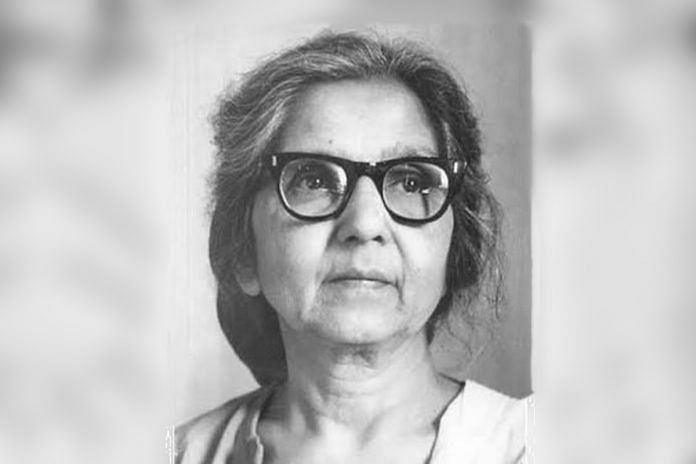New Delhi: Aruna Asaf Ali, one of the leading female figures of India’s freedom movement, was a revolutionary Leftist who picked up the mantle of leadership during the Quit India Movement in 1942.
On 8 August 1942, the Congress passed the Quit India resolution — and all its prominent leaders, including Mahatma Gandhi and Jawaharlal Nehru, were arrested by the British government.
Responding to Gandhi’s call to “do or die”, she defied the British by hoisting the Tricolour on 9 August 1942 at the Gowalia Tank Maidan (now Azad Maidan) in Bombay, giving the movement one of the Quit India Movement’s most enduring images. She successfully escaped arrest and went underground for years.
Post-independence, she remained active in public work, and was elected Delhi’s first woman mayor in 1958. She ran the Left-leaning Patriot newspaper and the weekly magazine Link in New Delhi. Ali passed away on 29 July 1996.
Contribution to the freedom struggle
Raised in a liberal, upper caste Bengali family that was part of the Brahmo Samaj and related to Rabindranath Tagore, Aruna Ganguly was extremely well educated. She married Asaf Ali, a member of the Congress best known for defending Bhagat Singh, and later becoming the Indian ambassador to the United States of America, despite severe opposition. He was 23 years her senior, and died in 1953.
Through Asaf Ali, Aruna associated with the leaders of the Indian freedom struggle and became an active member of the Congress.
She was arrested in 1931, and her release was secured only when Mahatma Gandhi intervened after public protests. Other women prisoners refused to leave the premises until she was also released. In 1932, she was arrested again and held in Tihar Jail, where she launched a hunger strike to protest the treatment of other political prisoners. She was moved to solitary confinement in Ambala, and was politically inactive after her release for 10 years until the Quit India Movement.
After 1942, her property was seized and sold. She went underground, and edited the Congress’s monthly magazine Inquilab with Ram Manohar Lohia.
Known for her independent streak, she even disobeyed Gandhi’s request to surrender herself in 1946. “I have been filled with admiration for your courage and heroism. You are reduced to a skeleton. Do come out and surrender yourself and win the prize offered for your arrest. Reserve the prize money for the Harijan (untouchables’) cause,” he had written.
The note reportedly remained with her all her life, but she resurfaced only when the reward on her head was withdrawn. She stuck to her ideals, and faced censure from Gandhi for her support of the Royal Indian Navy Mutiny.
Post-independence work
In 1948, Aruna quit the Congress and joined the Socialist Party. In the early 1950s, she became a member of the Communist Party of India, though she quit the party in 1956 following Krushchev’s denouncement of Stalin in the USSR.
She remained a Leftist throughout her life, and was instrumental in developing the National Federation of Indian Women, the women’s wing of the CPI.
Aruna was dedicated to mobilising support for Dalits, and opposed “needless industrialisation” as she believed it would lead to environmental degradation and social alienation. While she worked towards the upliftment of women, she faced criticism from feminist groups for her resisting affirmative action for women. She believed that education and better healthcare would do more for women than reservation.
She rejoined the Congress in 1964, though she stepped back from active politics. She remained close to Indira Gandhi despite being a critic of the Emergency.
Aruna was honoured both by the nationalists and the Left. Though she steered clear of accepting awards publicly, she was given the Order of Lenin and the Lenin Peace Prize in 1965. She was also awarded the Padma Vibhushan in 1992 and the Bharat Ratna posthumously in 1997. She was also the recipient of the Nehru Award for International Understanding.



